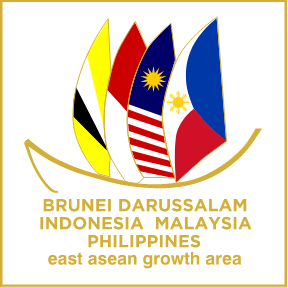About Budayaw
Background
Shortly after the addition of the Socio-cultural and Education Pillar in BIMP-EAGA in 2015, the Socio-cultural Development Working Group (SCD) agreed to institutionalize a signature event which will serve as venue to foster stronger connectivity among the peoples of the region. Budayaw, portmanteau of the Bahasa “budaya” which means culture and the Filipino “dayaw” which means good or beautiful, aims to strengthen the ties within the region through a celebration of its cultural diversity and heritage. Budayaw is a grand cultural exchange of the BIMP-EAGA held every two years, hosted by each of the member-states. The first Budayaw Festival was held in 2017, in General Santos City, in celebration of the 50th Anniversary of the ASEAN where Philippines was the host.
Festival Objectives
- Showcase the diversity of creative expressions of the BE region;
- Raise public awareness and appreciation on the landscapes and aspirations of the peoples of the region;
- Foster understanding and solidarity among the multi-cultural populations of the BE;
- Mobilize collaboration and convergence of multi-stakeholders, public and private.
Festival Components
To attain the above objectives, the following components are organized:
This is intended to raise the level of appreciation and understanding among students, educators and media practitioners on the peoples of the BE region. Selected resource persons will be invited to shed light on the past cultural and economic exchanges in the region, as well as share the present issues and future programs of the four countries.
This component will provide the audience a glimpse on the process of ikat weaving, a tradition common in the region. The exhibition aims to educate the public on the processes from the preparation of raw materials to the actual weaving. Invited weavers will demonstrate their skills and techniques to reflect diversity of designs and context.
Traditional and contemporary performances (theater, dance, music) will be performed simultaneously in different venues by more than five hundred participants coming from Brunei, Indonesia, Malaysia, Palawan and Mindanao.
Selected youth chorale from the four countries will sing country songs including the Budayaw theme song composed purposely for the Festival.
A mini-concert of traditional musicians perfroming their unique music, accompanied by their country instruments.
Works of visual artists from BIMP will be exhibited at the Merdeka Plaza Atrium. Interactive arts workshops will be conducted to engage the public into creative processes as well as learn the significance of the artwork.
Performances will be held outside of the city of Kuching to share with the townfolks the spirit of Budayaw and for the guests to experience the hospitality and culture of the countryside.
Organized by the Ministry of Tourism, Arts, Culture and Youth-Sarawak, this will consist of exhibition which will provide visitors an opportunity to know the tourist attractions and cultural icons of the four countries.
Chefs from the four countries will give visitors the chance to taste the unique dishes of Brunei, Indonesia, Malaysia and Philippines.
A fashion show of local fabrics cum performance will allow understanding to the richness of textile traditions in the country.

Festival Logo
BIMP-EAGA
The Brunei Darussalam Indonesia Malaysia Philippines East ASEAN Growth Area (BIMPEAGA) is a sub-regional economic cooperation designed to spur economic development in the lagging subeconomies of member countries. Established in 1994, BIMP-EAGA covers the entire sultanate of Brunei Darussalam; nine provinces in Kalimantan, Sulawesi, the island chain of Maluku, and Papua in Indonesia; Malaysia’s federal state of Sarawak, the federal territory of Labuan; the federal state of Sabah; and Mindanao’s 26 provinces and the province of Palawan in the Philippines. BIMP-EAGA has a total and land area of 1.6 million square kilometers and a combined population of over 60 million people.
With the end goal of narrowing the development gaps among its member states, the BIMP-EAGA economic cooperation focuses on five strategic pillars, which are connectivity, food basket, environment, tourism and social-cultural and education. Both the government and private sector have been playing an active role in ensuring the implementation of programs and projects in each strategic pillar.

